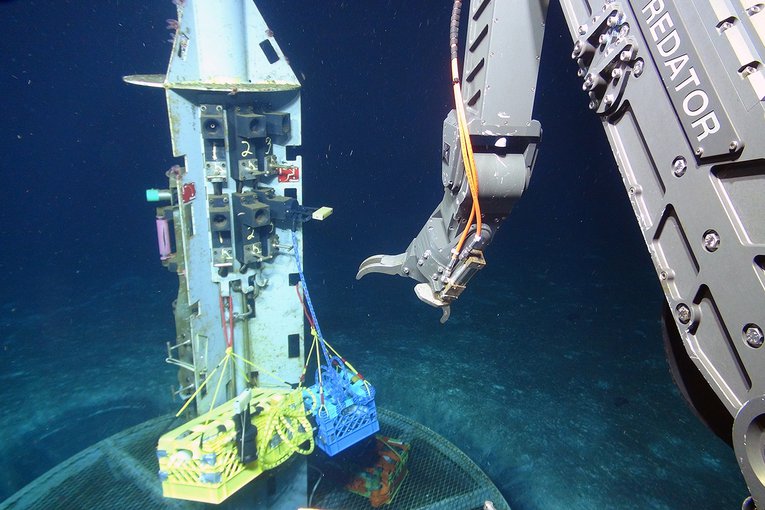
Feb. 12, 2019
Research Highlight
Clues to Early Life from the Deep

ROV Jason dive J2-711, 2013, Woods Hole Oceanographic Institution.Image credit: Courtesy of: Andrew Fisher, University of California, Santa Cruz, U.S. National Science Foundation,.
From the Bigelow Laboratory for Ocean Sciences:
“A new study has revealed how a group of deep-sea microbes provides clues to the evolution of life on Earth, according to a recent paper in The ISME Journal. Researchers used cutting-edge molecular methods to study these microbes, which thrive in the hot, oxygen-free fluids that flow through Earth’s crust.
Called Hydrothermarchaeota, this group of microbes lives in such an extreme environment that they have never been cultivated in a laboratory for study. A research team from Bigelow Laboratory for Ocean Sciences, the University of Hawai‘i at Mānoa, and the Department of Energy Joint Genome Institute bypassed the problem of cultivation with genetic sequencing methods called genomics, a suite of novel techniques used to sequence large groups of genetic information. They found that Hydrothermarchaeota may obtain energy by processing carbon monoxide and sulfate, which is an overlooked metabolic strategy. The microbes use energy from this process to grow as a form of chemosynthesis.”
Click here to read the full press release from the Bigelow Laboratory for Ocean Sciences.
The study, “Carboxydotrophy potential of uncultivated Hydrothermarchaeota from the subseafloor crustal biosphere,” was published in The ISME Journal. The work was supported in part through the NASA Astrobiology Institute (NAI) element of the NASA Astrobiology Program.
Additional Links:
Deep Sea Microbes Hold Clues to Early Life (NAI)